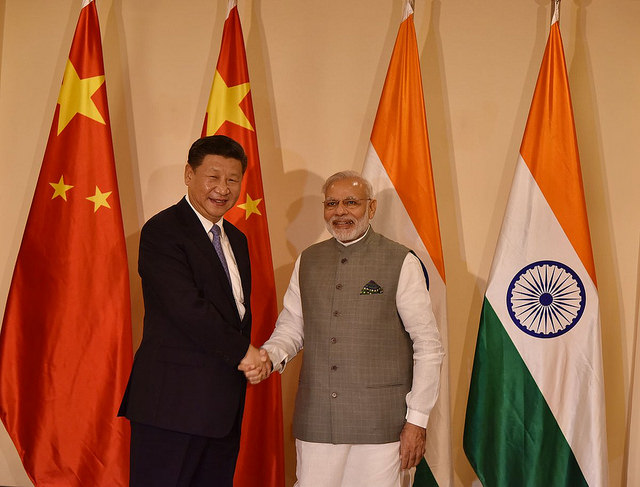by David Parmer / Tokyo
This week India’s PM, Narendra Modi heads to China for a fourth times since 2014. On April 27-28 Mr. Modi will meet with China’s President Xi Jinping in the cities of Wuhan, Hubei Province for an “informal summit.” While improved relations with one’s neighbors is a good thing, generally speaking, expectations seem to be fairly modest for this Modi-Xi meeting.
Items on the agenda include re-opening a route to Tibet’s sacred Mt. Kalish and information sharing on hydrological data relating to the Brahmaputra and Sutlej rivers. The other stated aim of the meeting is to reduce any lingering tensions from last year’s 73-day Doklan/Donglang standoff along their border.
The real purpose for the “summit” seems to be obscure. What exactly does each side expect to gain, or what message do they want to send to the world? Maybe Mr. Xi, who seems to view things in the long term as well as the short term, sees it in China’s long-term interest to have better relations with India.
China has always been stronger in its border confrontations with India, that is obvious. On the other side of the coin, China is weak in the Indian Ocean where it has to bring its assets thousands of miles south and west to project power. So China might have the upper hand on land, but it is apparent that the sea, particularly the Indian Ocean will go to India.
For Mr. Modi, maybe going to China, dealing with a troubling situation, and perhaps getting some concessions from the Chinese, may make him look good in the eyes of Indian voters. So going to “the Chinese court” every year may just gain Mr. Modi some real benefits for his country and for his own re-election in 2019.
Please log in and give us your thoughts on this matter.
Photo: Narendra Modi 2016 flickr
 日本語
日本語 English
English 中国語
中国語